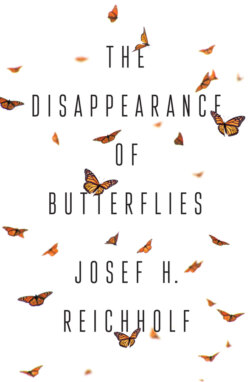Читать книгу The Disappearance of Butterflies - Josef H. Reichholf - Страница 17
Up and away in an air balloon
ОглавлениеThe most impressive moment of all is when the moth emerges from the pupa. There is the moth, enclosed in the floating leaf case, 20–30 centimetres under water. It then pushes open the top of the leaf case. The escaping air bubble drags the moth up to the water surface, like a hot air balloon with its basket. At the surface the bubble bursts, and Nymphula emerges from the water. Immediately, a coating of long scales spreads out on the surface around the moth. Supported by the surface tension, it searches tentatively for the next leaf by probing with its legs. Once it finds a leaf, it crawls onto it and pumps up its wings until they are completely unfurled. The moth often emerges in the morning, but it can also hatch late in the afternoon and in the early evening. The newly hatched moths seek the cover of the plants on the bank as soon as they can fly.
There they attach themselves with their head pointing down, in what is for them a very characteristic pose. Seen from the water, as well as from the perspective of a bird hunting in the reeds for insects, this position conceals much of the shape of their body. One can only recognize that they are moths if one looks into the reeds at approximately the same level. But even then, the fine pattern of yellowish whorls and darker spots impedes visual detection. At the periphery of the reed bed, it remains damp enough on hot days for the small bodies not to dry out. Avoiding desiccation is particularly important for the males, as they must often spend several evenings and perhaps a whole week waiting to find a freshly hatched female that is ready to mate. It is less important for the females, since they die shortly after laying their eggs.
Only once have I been lucky enough to witness the emergence process in an aquarium. I already knew roughly how it would happen, since how else would the moth be able to reach the water surface from its underwater case? But as I saw it for myself, it was still as if a miracle had taken place.
When the adult emerges, it is midsummer. According to the type of weather experienced in spring, the second generation of brown china-marks hatches later in July or August, sometimes even at the beginning of September. What happens next? They must survive the winter. Overcoming this difficulty necessitates a special extra stage in the second lifecycle of the year. The caterpillars that are still wet from the water do not enter the third stage that would make them waterrepellent in autumn, but instead crawl without a leaf case down the stem of the water plant to a depth of at least 30 centimetres below the water surface. There they bite a hole, provided the stem is thick enough, excavate a narrow, oblong cavity and draw themselves into this chamber, their shape bent crooked at one end like the handle of a walking-stick. In this manner they spend the winter months until April or the beginning of May, when the water plants begin to sprout new leaves. Any floating leaves still on the surface of the water die away late in autumn. The caterpillars hibernate inside the plant stems, even if ice forms on the water above them.
In the spring, the rising temperature of the pond water allows the plants to grow new shoots and leaves. This onset of growth evidently signals to the caterpillars that it is time to become active once more. They leave their cavities, crawl upwards and feed on the tender new leaves. This provides them with the wax necessary for their transformation into the water-repelling condition. By May, the only caterpillars will be those in air-filled leaf cases, feeding hungrily on new floating leaves until they are fully grown and ready for pupation. The moths that hatch from those pupae make up the first generation. Their descendants will continue to develop, without the need for a hibernation period. With these two reproductive cycles, the year of the ‘little nymph’, Nymphula, is complete.
